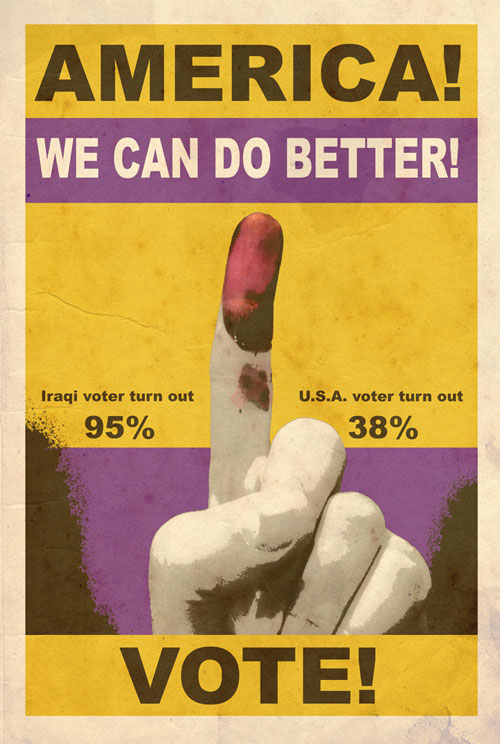This is a letter that Dr. Coburn sent to all of his Senate colleagues on the 27th:
9,000,000,000,000
Ways to Balance the Budget
July 27, 2011
Dear Colleague,
Nearly everyone in Washington agrees we must reduce the deficit, but few offer any specifics as to how to do it. Last week, I released a report, BACK IN BLACK, outlining thousands of detailed budget options within every federal department and nearly every major program that, if taken together, would result in savings of more than $9 trillion over the next decade.
I do not expect anyone to agree with everything recommended in this report, but I expect everyone will find things with which they agree. With negotiations stalemated, I wanted to bring your attention to some very simple commonsense ideas I believe most of us—and most Americans—regardless of party or ideology could support that would save at least $355 billion.
End Unemployment Payments to Millionaires
Savings: $186 million over ten years
Nearly 3,000 households with incomes of $1 million or more were paid a total of $18.6 million in unemployment insurance benefits in 2008. Those earning $1 million a year do not need and should not qualify for unemployment compensation.
Stop Payments to Dead People
Savings: Over $1 billion over ten years.
Washington sent over $1 billion to more than 250,000 deceased individuals over the past decade. The federal government paid for dead people’s prescriptions and wheelchairs, subsidized their farms, helped pay their rent, and even chipped in for their heating and air conditioning bills. Some of these payments were fraud, some were incompetence, and some were intentionally required by law. Congress should end payments to the dead and federal agencies should ensure beneficiaries and participants of government payments are, in fact, alive.
Eliminate Duplication
Savings: At least $50 billion over ten years
In March, the Government Accountability Office (GAO) released a report examining just 34 missions of the federal government and identified hundreds of duplicative and overlapping programs costing more than $215 billion a year. These included 47 separate job training programs, 88 economic development programs, 82 teacher quality programs, and 56 financial literacy programs. “Reducing or eliminating duplication, overlap, or fragmentation could potentially save billions of taxpayer dollars annually and help agencies provide more efficient and effective services,” GAO concluded. Another independent study identified at least 180 economic development programs within more than a dozen different agencies costing taxpayers about $17.9 billion annually. Duplication within the federal bureaucracy should be consolidated.
Eliminate Sweet Heart Deals for Government Contractors
Savings: At least $2 billion over ten years
The federal government pays over $500 billion annually to contractors. In 2009, $170 billion worth of contracts were awarded without competition. Competitive bidding for government contracts helps ensure the highest-quality services for the lowest cost, while no-bid contracts waste billions of dollars with little apparent benefit to anyone other than contractors. No bid contracts should be eliminated.
Collect Unpaid Taxes Owed by Federal Employees
Savings: $1 billion over ten years
Nearly 100,000 civilian federal employees were delinquent on their federal income taxes in 2008. These federal employees owe a total of $962 million in unpaid federal income taxes. The IRS should collect these overdue taxes.
Reduce Congress’ Spending on Itself
Savings: $3.82 billion over ten years
Since 2001, Congress has boosted its own budget by 55 percent. At the same time, the average American wage increased by only 23 percent. In real dollars, the budget of the House and Senate has grown by more than $1 billion over the last decade. Congress must lead by example and do more with less. Congress’ spending on itself should be reduced by at least 15 percent.
Stop Overpaying Drug Companies
Savings: $480 million over ten years
The Health Resources and Services Administration (HRSA) overpays pharmaceutical companies nearly a million dollars a week. According to the Government Accountability Office, drug companies were overpaid $3.9 million in a single month! HRSA should be required to routinely monitor prices to ensure taxpayers are not being overcharged and take immediate corrective action to recoup any excess payments.
Reduce Unnecessary Government Printing
Savings: $4.9 billion over ten years
Federal agencies – excluding the Department of Defense – spend nearly $1.3 billion a year on routine office printing. A third of this printing is unnecessary, according to an independent analysis. Agencies should put an end to this wasteful habit and administrative accounts of each department should be reduced accordingly.
Eliminate Unnecessary Printing of Congressional Documents
Savings: $312.2 million
In the digital age, printed copies of Congressional reports and other documents are as likely to grace a landfill as a bookshelf. In 2010, nearly $100 million was allocated for Congressional Printing and Binding account. A representative of the Government Printing Office (GPO) recently testified, “70 percent of the GPO’s funds are used to digitize legislation, schedules and other federal records, while 30 percent is used to print hard copies.” Reducing the Congressional Printing account by 30 percent would put an end to the wasteful practice of printing and distributing congressional documents that are almost immediately thrown away. The documents would still be available online and users could decide whether or not to print hard copies.
Get Rid of Unneeded Federal Properties
Savings: $15 billion over ten years
The federal government has over 63,000 buildings that are underutilized and not utilized at all. This number has increased by more than 12,000 from only two years ago. It costs over $1.2 billion every year to operate these properties. The federal government should dispose of all excess properties within five years. According to the Obama Administration, at least $15 billion could be saved if the federal government gets rid of its unneeded properties.
End Subsidy for Ethanol Blending
Savings: $2 billion one time savings
Ethanol producers reap the benefits of a vast array of government assistance, including tax credits, grants, loans, loan guarantees, federally-directed markets, and a federal minimum usage mandate. The Volumetric Ethanol Excise Tax Credit provides a 45-cent-per-gallon federal tax credit to producers who blend ethanol with gasoline. Ethanol-blended fuel is nearly a third less efficient than gasoline, has contributed to the increased price of corn, and can cause engine damage. Ethanol subsidies are outdated, duplicative, and have failed to meet the intended goals of greater energy independence with a cleaner fuel alternative. The ethanol tax credit should be eliminated immediately.
Reduce the Number of Limousines Owned by the Government
Savings: $115.5 million over ten years
In the past two years, the federal government’s limousine fleet has grown by 73 percent. The federal government had 238 limos in 2008 and that number reached 412 last year. The number of limos owned by the federal government should be reduced to its previous level.
Reduce Federal Vehicle Fleet
Savings: $5.6 billion over ten years
Federal agencies own or lease over 662,000 cars, vans, sport-utility vehicles, trucks, buses and other vehicles. Since 2006, the federal vehicle fleet has grown by five percent and the cost of maintaining and servicing those vehicles has grown over 25 percent, to $4.6 billion. These vehicles consume about a million gallons of fuel per day. The General Services Administration will purchase more than 100 more vehicles this year. Instead, the number of vehicles in the federal fleet should be reduced by at least 20 percent.
Reduce Junkets and Unnecessary Travel
Savings: $43.3 billion over ten years
The federal government spends $15 billion on travel every year. All travel that is not mission-critical should be ended.
Reduce Advertising by the Federal Government
Savings: $5.6 billion over ten years
The federal government spent almost $1 billion on advertising last year. While some advertising may be needed, much of it is wasteful and unnecessary and this amount should be cut in half.
Limit the Amount Spent to Host Government Conferences
Savings: $1 billion over ten years
The federal government spent at least $2 billion on conferences between 2000 and 2006. Some conferences may provide important venues for exchanging ideas or providing training. Others appear to be little more than government funded vacations at beachside resorts and other exotic destinations. Traveling to meetings and hosting conferences are, in large part, no longer necessary with the availability of teleconferencing. Total spending on conferences should not exceed $100 million annually and conferences should only be held when other options are not feasible.
Use Better Measure of Inflation to Determine Increases in Benefit Payments
Savings: Approximately $180 billion over ten years
Many government benefits are automatically increased for inflation every year, based on the consumer price index (CPI). For more than 15 years, many budget experts have agreed the current CPI mechanism outpaces actual inflationary growth, causing the cost of government programs to rise rapidly. The Bureau of Labor Statistics developed a more accurate measure of inflation, known as Chained CPI, which over the last ten years has grown at a slightly slower rate than the current measure for CPI. Congress should adopt the recommendation of the President’s National Commission on Fiscal Responsibility and Reform to transition to Chained-CPI government wide to ensure this automatic spending increase is as accurate as possible to avoid uncontrolled automatic spending increases in federal programs.
Eliminate Hollywood Liaisons
Savings: $34.4 million over ten years
Many federal agencies have offices and programs to assist Hollywood movie producers and television execs, often with the goal of ensuring a positive portrayal of the federal government. The agencies have at least 14 employees costing $1.2 million. These should be eliminated.
Stop Purchasing Excess Land
Savings: $4.1 billion over ten years
The federal government has spent more than $430 million to purchase additional land since the start of the recent recession and more than $2.3 billion over the past decade. At the same time, the Department of the Interior maintenance backlog on public lands has surged to as high as $19.9 billion, resulting in serious risk to visitors and deteriorating conditions of important national treasures. The National Mall, for example, has been so neglected it has been called a national disgrace. Until the federal government can afford to take care of the land it already owns, it should be prohibited from purchasing additional land.
End Payments for Coal Cleanup When Projects Have Been Certified as Being Completed
Savings: $1.23 billion over ten years
The federal government continues to send funds intended for the cleanup up abandoned coal mines to several states and tribes that have already been certified as completing their work. The funds are unrestricted and have essentially become slush funds. These dollars should be used only for their intended purpose and directed to states with abandoned sites, with excess amounts should be returned.
Suspend the Automatic Pay Raise for Members of Congress
Savings: $6 million over three years
Members of Congress typically receive an automatic pay raise every year. Congress voted to freeze the salary of its member for the past two years at $174,000. The pay for members of Congress should be frozen for at least three more years.
Get the Department of Defense Out of Education and the Grocery Store Business
Savings: $19 billion over ten years
The Department of Defense currently operates hundreds of grocery stores and dozens of elementary schools in the United States. These grocery stores are in the same communities that have Wal-Mart, Costco, Safeway, and other choices for military personnel. Instead of paying our soldiers more money and allowing them to choose where to shop, we subsidize thousands of federal employees to work in grocery stores around the country. Similarly, the Department of Defense employs thousands of teachers in a unique school district called the Department of Defense Education Activity. Under the Pentagon’s management, taxpayers are spending more than $50,000 per student enrolled in these schools. The Pentagon should shut down its education bureaucracy, send much of this money to bolster local public schools, and return the rest for debt reduction.
Terminate HHS’s Community Economic Development Program
Savings: $38 million over ten years.
The mission of the Community Economic Development program (CED) duplicates 180 other government development programs, has a very low success rate, and does not fit within the mission or expertise of the Department of Health and Human Services (HHS). According to HHS’s most recent report to the Congress, only one out of five funded projects within the CED program were successful. Due to its lack of success, duplicative nature, and inappropriate placement within HHS, CED should be eliminated.
End Federal Subsidies to Wealthy Doctors and Hospitals for Health Information Technology
Savings: $15.6 billion over ten years.
The federal government mandates and subsidizes the use health information technology (IT) for doctors and hospitals, despite scant evidence doing so will lower costs. Taxpayers should not be forced to subsidize the purchase of health IT by doctors and hospitals.
Stop Medicare Payments for Uncovered Services
Savings: $1.97 billion over ten years.
Medicare currently only pays for medically necessary chiropractic services, but a HHS Inspector General report found the program improperly spent $178 million on chiropractic services in 2006. Implementing and enforcing current policies, along with more careful reviews of documentation, could save taxpayers nearly $2 billion over a decade.
This list is just a handful of the savings options contained within BACK IN BLACK. I would encourage you to review the thousands of other recommendations. I would also be interested in hearing other debt reduction ideas you might have.
Sincerely,
Tom A. Coburn, M.D.
U.S. Senator




















No comments:
Post a Comment